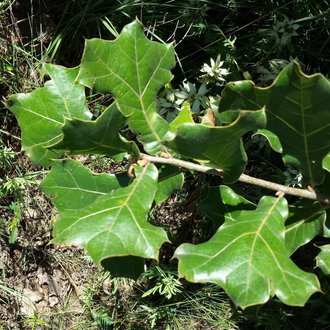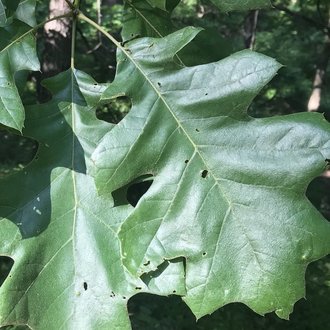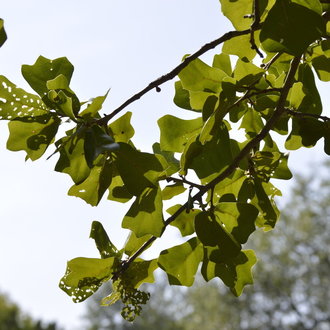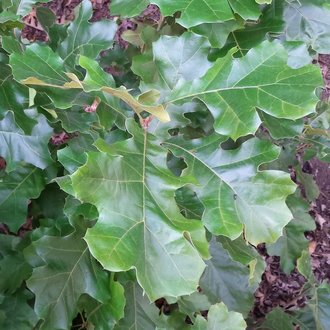Blackjack Oak vs Black Oak
This guide is under construction and has not been published yet. It may have errors. When in doubt, double-check other sources for definitive ID.These oaks are sometimes confused due to their occurrence on dry sites with poor soils, and their tough, leathery leaves. Pure species are easily distinguished in most cases by black oak leaves having more lobes, lobes at the base of each leaf, and usually deeper-cut lobes. The example pics here show black oak leaves that look most similar to blackjack oak. These species readily hybridize and form intergrades, and in some regions, such hybrids can be locally common, so not all trees are able to be definitively identified as one species or the other. Blackjack oak usually prefers harsher, more exposed, fire-prone sites.
Blackjack Oak (Quercus marilandica) | Black Oak (Quercus velutina) |
An oak, native to eastern North America, adapted to extreme, nutrient-poor sites that burn regularly. | A large oak with a wide distribution across eastern North America, common in much of its range, often a canopy tree in forests. More tolerant of dry, nutrient-poor conditions than most large oaks. |
Leaves often 3-lobed, occasionally up to 5 lobes. Usually lobes only at the tip of the leaf, with no lobes at the base of leaf. Photo © Even Dankowicz, CC BY 4.0. | Leaves 5-9 lobed. Lobes roughly evenly distributed, and present at the base of the leaf. Photo © Andrew Conboy, CC BY 4.0. |
Lobes shallow and often flat-across. Photo © Natasha Haggard, CC BY 4.0. | Lobes can be shallow or deep, but never flat-across. Photo © Even Dankowicz, CC BY 4.0. |
References & External Resources
These short lists show only links helpful for ID. For a complete list of references and resources also covering other aspects of ecology, visit the links section of the full article on each plant, which is the first entry here.






